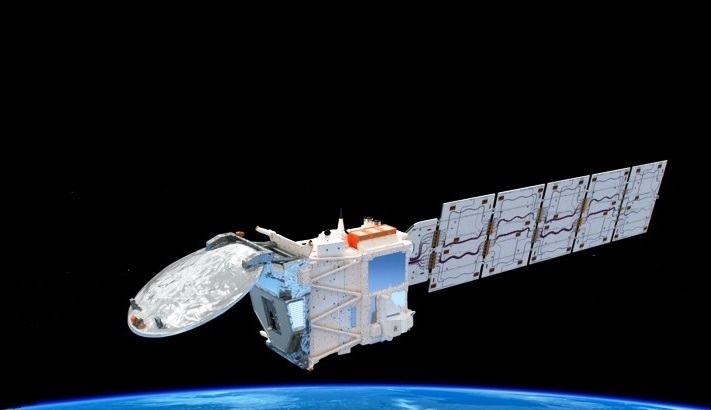BAE Systems to build ACX for NOAA’s GeoXO constellation

Above: Smog over a deep mountain valley.
Courtesy NOAA
GeoXO is a constellation of three satellites meant to expand on Earth observations made by its predecessor, NOAA’s current Geostationary Operational Environmental Satellites-R series (GOES-R). The mission will continue to gather data in support of key NOAA focus areas, such as lightning mapping and visible and infrared imagery for weather monitoring. However, GeoXO will also provide novel, high-priority capabilities such as atmospheric composition, infrared sounding and ocean color observations to enhance forecasts and science benefits.
The BAE Systems-developed ACX instrument is a hyperspectral imager that will take hourly air quality measurements across a spectrum of ultraviolet (UV) to visible (VIS) light. The high-spatial and temporal resolution measurements enable observations of rapidly changing air quality during the day, improving air quality forecasts.
“The ACX instrument will deliver robust, practical benefits for the science and operational user communities, as well as the public at large,” said Dr Alberto Conti, vice president and general manager of Civil Space for BAE Systems Space & Mission Systems. “Not only will this instrument provide cutting-edge measurements of air quality but it will also improve weather forecasts, help pilots avoid dangerous situations, warn hospitals of imminent air quality issues and protect the lasting health and economic stability of our communities.”
In addition to its critical role as an operational observational asset for NOAA, ACX will serve as a valuable tool in several important research areas. The instrument will accurately measure emissions and movement of aerosol particles, nitrogen dioxide, formaldehyde, glyoxal, sulfur dioxide and ozone. Combining the hyperspectral capabilities of ACX with the GeoXO Imager (GXI) and infrared sounder (GXS) instruments will enhance weather product data available to NOAA.
The ACX instrument builds on BAE Systems experience developing innovative atmospheric monitoring capabilities. South Korea’s Geostationary Environment Monitoring Spectrometer (GEMS) and NASA’s Tropospheric Emissions: Monitoring of Pollution (TEMPO) instruments — both developed by BAE Systems — are currently the only UV/VIS hyperspectral imagers in geostationary orbit. Once launched, ACX will be part of an envisioned “geostationary ring” of satellites providing air quality measurements throughout greater North America, Asia, Europe and North Africa.
In addition to ACX, BAE Systems was also selected to build the GeoXO Sounder (GXS) instrument, which will measure atmospheric moisture, winds, and temperature to enhance weather prediction models and short-term severe weather forecasting among other applications. Building multiple instruments for GeoXO will allow BAE Systems teams to collaborate across programs and achieve a more efficient development process.
GeoXO is expected to begin operations in the early 2030s and continue operating through 2055.














